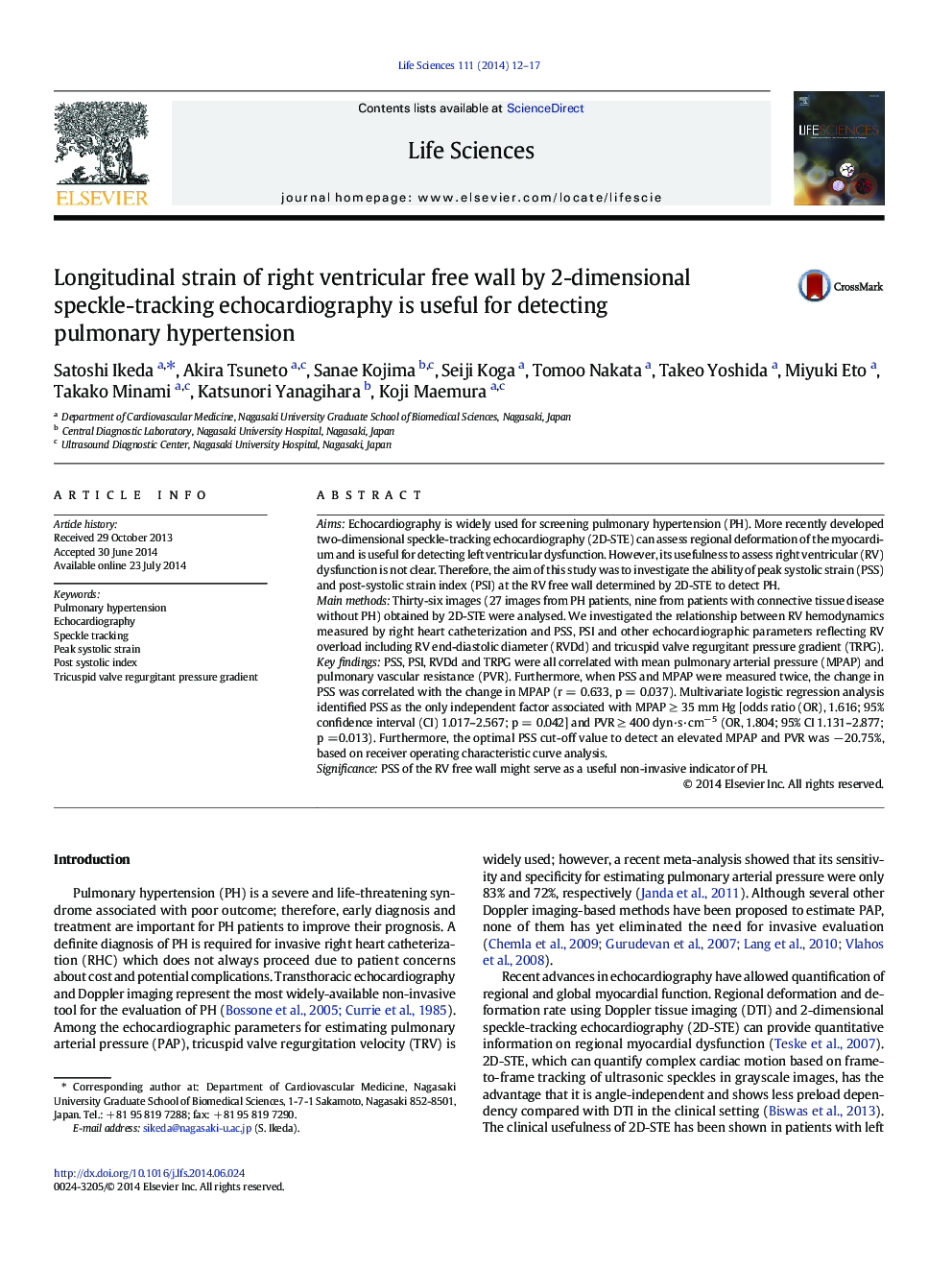| Article ID | Journal | Published Year | Pages | File Type |
|---|---|---|---|---|
| 2551109 | Life Sciences | 2014 | 6 Pages |
AimsEchocardiography is widely used for screening pulmonary hypertension (PH). More recently developed two-dimensional speckle-tracking echocardiography (2D-STE) can assess regional deformation of the myocardium and is useful for detecting left ventricular dysfunction. However, its usefulness to assess right ventricular (RV) dysfunction is not clear. Therefore, the aim of this study was to investigate the ability of peak systolic strain (PSS) and post-systolic strain index (PSI) at the RV free wall determined by 2D-STE to detect PH.Main methodsThirty-six images (27 images from PH patients, nine from patients with connective tissue disease without PH) obtained by 2D-STE were analysed. We investigated the relationship between RV hemodynamics measured by right heart catheterization and PSS, PSI and other echocardiographic parameters reflecting RV overload including RV end-diastolic diameter (RVDd) and tricuspid valve regurgitant pressure gradient (TRPG).Key findingsPSS, PSI, RVDd and TRPG were all correlated with mean pulmonary arterial pressure (MPAP) and pulmonary vascular resistance (PVR). Furthermore, when PSS and MPAP were measured twice, the change in PSS was correlated with the change in MPAP (r = 0.633, p = 0.037). Multivariate logistic regression analysis identified PSS as the only independent factor associated with MPAP ≥ 35 mm Hg [odds ratio (OR), 1.616; 95% confidence interval (CI) 1.017–2.567; p = 0.042] and PVR ≥ 400 dyn·s·cm− 5 (OR, 1.804; 95% CI 1.131–2.877; p = 0.013). Furthermore, the optimal PSS cut-off value to detect an elevated MPAP and PVR was − 20.75%, based on receiver operating characteristic curve analysis.SignificancePSS of the RV free wall might serve as a useful non-invasive indicator of PH.
